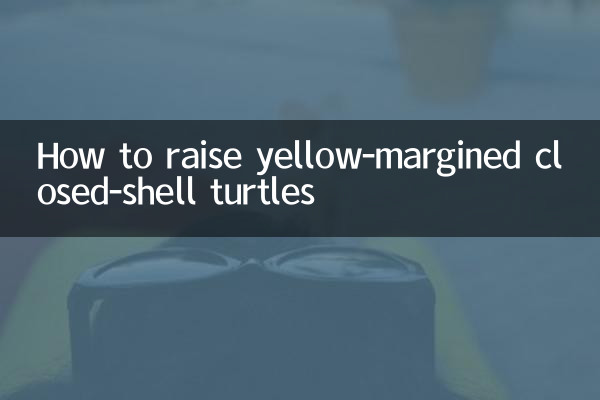How to Raise a Yellow-margined Sea Turtle: A Comprehensive Guide
The yellow-margined closed-shell turtle (scientific name: Cuora flavomarginata) is a popular pet turtle loved for its unique shell and docile personality. However, raising yellow-margined turtles requires certain knowledge and skills. This article will provide you with a comprehensive feeding guide, including environmental settings, dietary management, health care, etc., to help you better care for this beautiful turtle.
1. Basic information about the yellow-margined closed-shell turtle

The yellow-margined turtle is mainly distributed in southern China, Taiwan and Japan's Ryukyu Islands. They are semi-aquatic turtles that like moist environments and require a combination of land and water. The following are the basic characteristics of the yellow-margined turtle:
| feature | describe |
|---|---|
| Shell color | Dark brown or black with obvious yellow stripes on the edge |
| body shape | Adult turtles are 15-20 cm long, with females slightly larger than males. |
| life | It can last up to 30-50 years in captivity |
| feeding habits | Omnivorous, mainly eating plants, insects, and small invertebrates |
2. Feeding environment settings
Yellow-margined turtles need an environment that simulates their natural habitat. The following are the key points of environmental settings:
| environmental factors | Specific requirements |
|---|---|
| Breeding box size | At least 100 x 50 cm (single adult turtle) |
| water area | Accounting for 30-40% of the total area, the water depth is 5-10 cm |
| land area | Accounting for 60-70% of the total area, lay coconut soil or moss |
| temperature | 25-28℃ during the day, 22-25℃ at night, and 30-32℃ in local hot spots |
| humidity | Maintain 70-80%, can be maintained by spray or humidifier |
| illumination | UVB light is illuminated for 10-12 hours a day to simulate the natural light cycle |
3. Diet management
Yellow-margined turtles are omnivores and require a balanced diet. The following is a recommended diet plan:
| food type | specific food | Feeding frequency |
|---|---|---|
| animal protein | Earthworms, snails, crickets, small fish | 2-3 times a week |
| plant food | Dandelion leaves, alfalfa, pumpkin, carrots | Available daily |
| fruit | Apples, bananas, strawberries (a small amount) | 1-2 times a week |
| Calcium supplement | Cuttlefish bone, calcium powder | 2-3 times a week |
4. Health Care
Keeping your yellow-margined turtle healthy requires regular observation and care:
| health problems | Precautions |
|---|---|
| Shell problem | Regularly check the housing for damage or infection and keep the environment clean |
| respiratory diseases | Avoid sudden changes in temperature and maintain appropriate humidity |
| parasitic infection | Regular deworming, newly purchased turtles need to be isolated and observed |
| Malnutrition | Provide a varied diet with vitamin and mineral supplements |
5. Precautions for reproduction
If you plan to breed yellow-margined turtles, there are a few things to note:
| reproductive elements | Specific requirements |
|---|---|
| sexual maturity age | Females are 5-7 years old, males are 4-6 years old |
| breeding season | Spring to early summer (April-June) |
| spawning environment | Provide a 20-30 cm deep spawning area (sand and soil mix) |
| Incubation conditions | Temperature 28-30℃, humidity 80-90%, incubation period 60-80 days |
6. Summary
Raising a yellow-margined turtle is a long-term commitment that requires an investment of time and energy from the owner. By providing a suitable environment, a balanced diet, and regular health checkups, your golden-margined turtle can live a healthy and happy life for decades. Please remember that wild yellow-margined turtles are a protected species, and captive-bred individuals must be obtained through legal channels.
If you are raising turtles for the first time, it is recommended to do enough homework before raising them, or consult an experienced breeder. Properly raising yellow-margined turtles not only ensures their health, but also allows you to enjoy observing the daily behavior of this beautiful creature.

check the details

check the details